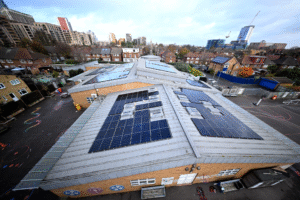Just half of 21 million British homes meet insulation standards set in the 1970’s, according to a study by energy supplier EDF and property data platform Sprift.
In the new research it was discovered the majority (56%) of homes in England and Wales met insulation standards set in 1976 or earlier.
Less than a tenth were found to have an insulation of 2002 or younger, while 37% of home owners stated they had updated their insulation.
A quarter of those surveyed said they hadn’t updated their insulation because it’s too expensive, while a fifth said they’d rather spend their money elsewhere and 17% weren’t sure of what type of insulation they needed.
Despite improving energy efficiency being a prime way to reduce energy bills, 21% of homeowners were unaware of the different ways a home could be insulated and two thirds of respondents didn’t know their home’s EPC rating.
The study also found that, currently, loft insulation could save a household £250 in energy bills per year which could rise if bills continue to increase.
The majority of respondents said the main thing causing them to consider updating their home’s insulation was high energy bills they wished to reduce.
Ahead of Ofgem’s announcement of the next price cap, EDF is starting a campaign to get homes ‘winter ready’ through the installation of insulation and smart metres.
Additionally, it was announced the company will spend an extra £20m on energy efficiency measures for fuel poor households this year to get as many homes as possible insulated.
Philippe Commaret, Managing Director for Customers at EDF, said: ‘It’s surprising that the average insulation age of a home is over 40 years old, with so few homes having sufficient insulation installed to meet modern energy efficiency standards.
‘As energy prices continue to rise, quality insulation is the most effective way to cut household bills permanently, however is often overlooked as the cost of installation is a significant barrier to many.
‘That’s why it’s so important that we work with Government and industry to find new ways to get more homes insulated as soon as possible and why we’ll be supporting our vulnerable customers to help insulate their homes now, ahead of bills rising again in October.’
EDF is asking the government for a new scheme to help people insulate their homes, like the ECO scheme which provided 2.2 million homes with energy efficiency measures.
Photo by Gonzalo Facello
















